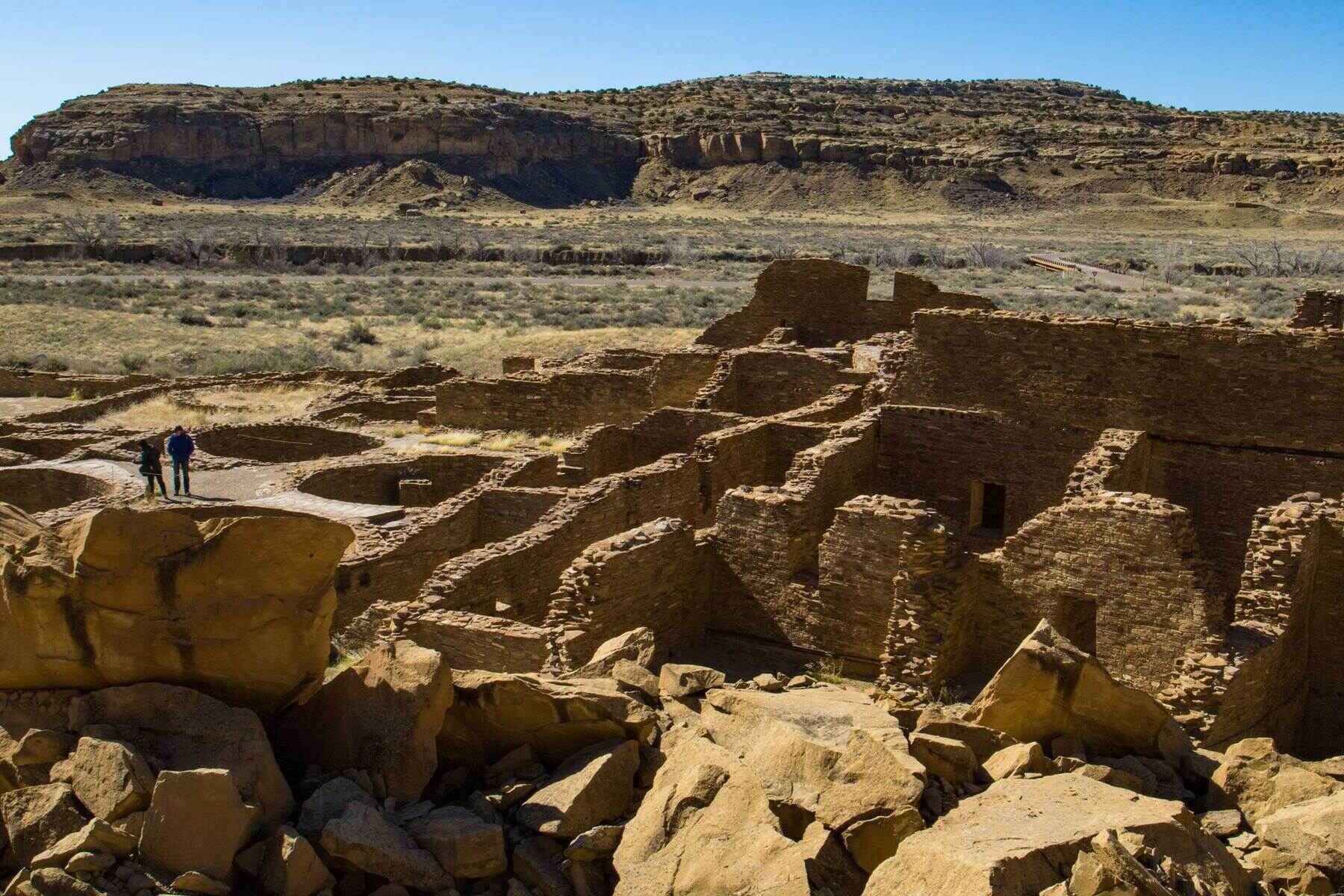Secrets Of New Mexico’s Chaco Canyon Villages

Ever wondered about the ancient mysteries hidden in the American Southwest? Chaco Canyon in New Mexico holds secrets of a civilization that thrived over a thousand years ago. This UNESCO World Heritage Site is home to impressive ruins of great houses and ceremonial buildings. Imagine walking through a place where ancient people built massive stone structures without modern tools. These villages were once bustling centers of trade, astronomy, and culture. The architecture aligns with celestial events, showing their deep connection with the cosmos. Visiting Chaco Canyon is like stepping back in time, offering a glimpse into the lives of the Ancestral Puebloans. Whether you're a history buff or just curious, this place will leave you in awe. Ready to learn more about this fascinating site? Let's dive into the wonders of Chaco Canyon and uncover its ancient stories.
Ancient Mysteries of Chaco Canyon
Chaco Canyon, located in northwestern New Mexico, is a place where history whispers through the winds. This UNESCO World Heritage Site holds secrets of ancient civilizations that once thrived in the harsh desert landscape. Let's take a closer look at some of the most intriguing villages in this fascinating area.
Pueblo Bonito: The Heart of Chaco
Pueblo Bonito is the largest and most famous of the Chacoan great houses. It was a hub of activity and a center for trade, religion, and politics.
- Pueblo Bonito
- Size and Structure: This massive complex had over 600 rooms and stood four stories high. Its D-shaped design is unique and impressive.
- Cultural Significance: It served as a ceremonial center and possibly housed elite members of the society.
- Astronomical Alignments: The building's layout aligns with solar and lunar cycles, showcasing the Chacoans' advanced understanding of astronomy.
Chetro Ketl: Architectural Marvel
Chetro Ketl, another grand structure, is known for its architectural innovations and artistic expressions.
- Chetro Ketl
- Size and Features: Covering more than three acres, it had around 500 rooms and a large plaza.
- Great Kiva: This ceremonial room was a focal point for gatherings and rituals.
- Intricate Masonry: The walls display exquisite stonework, reflecting the skill and artistry of its builders.
Casa Rinconada: Spiritual Center
Casa Rinconada stands out as one of the most significant spiritual sites in Chaco Canyon.
- Casa Rinconada
- Great Kiva: This is the largest kiva in the canyon, measuring 63 feet in diameter.
- Ritual Importance: It likely played a central role in religious ceremonies and community events.
- Astronomical Features: The kiva's design includes windows and niches that align with celestial events.
Pueblo del Arroyo: A Mystery Unfolds
Pueblo del Arroyo offers a glimpse into the daily lives of the Chacoan people, with its unique layout and purpose.
- Pueblo del Arroyo
- Distinctive Design: Unlike other great houses, it lacks a plaza and kiva, suggesting a different function.
- Trade and Economy: Artifacts found here indicate extensive trade networks with distant regions.
- Construction Phases: Built in several stages, it reflects the evolving needs and priorities of its inhabitants.
Hungo Pavi: Lesser-Known Gem
Hungo Pavi may not be as famous as other sites, but it holds its own charm and historical significance.
- Hungo Pavi
- Compact Structure: With around 150 rooms, it is smaller but still impressive.
- Strategic Location: Positioned near a canyon entrance, it may have served as a gateway or lookout.
- Cultural Insights: The site provides valuable information about the social and economic aspects of Chacoan life.
Kin Kletso: A Glimpse into the Past
Kin Kletso offers insights into the later stages of Chacoan culture, with its distinct architectural style.
- Kin Kletso
- Rectangular Layout: Its design differs from earlier structures, indicating changes in architectural preferences.
- Multi-Story Building: The three-story structure housed around 55 rooms.
- Cultural Transition: Artifacts suggest a shift in cultural practices and influences during its occupation.
Wijiji: The Hidden Village
Wijiji is a smaller, more secluded site that reveals the diversity of Chacoan settlements.
- Wijiji
- Remote Location: Tucked away in a side canyon, it offers a peaceful retreat from the larger complexes.
- Simple Design: With only a few dozen rooms, it reflects a more modest lifestyle.
- Preservation: Its isolation has helped preserve the site, allowing for a clearer understanding of its original state.
Discovering the Mysteries of Chaco Canyon
Chaco Canyon's ancient villages hold a unique place in history. These archaeological sites reveal the ingenuity and resilience of the Ancestral Puebloans. Their architectural skills, seen in the massive stone structures, are impressive. The Great Houses and kivas show a deep understanding of astronomy and community planning. Exploring these ruins offers a glimpse into a civilization that thrived in the harsh desert environment. The canyon's remote location adds to its mystique, making it a fascinating destination for those interested in history and culture. Visiting Chaco Canyon provides a chance to connect with the past and appreciate the achievements of those who lived there centuries ago. Whether you're an archaeology enthusiast or just curious about ancient cultures, Chaco Canyon promises an unforgettable experience. Its secrets continue to captivate and inspire, reminding us of the rich tapestry of human history.

